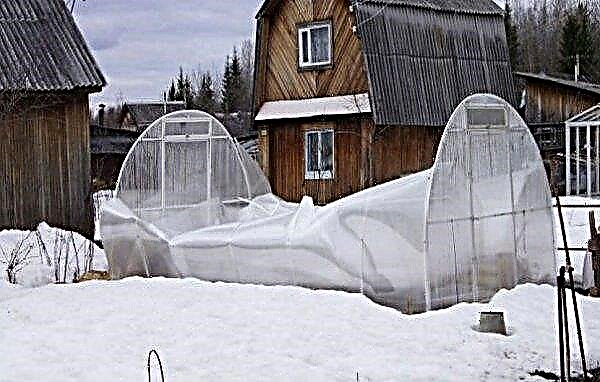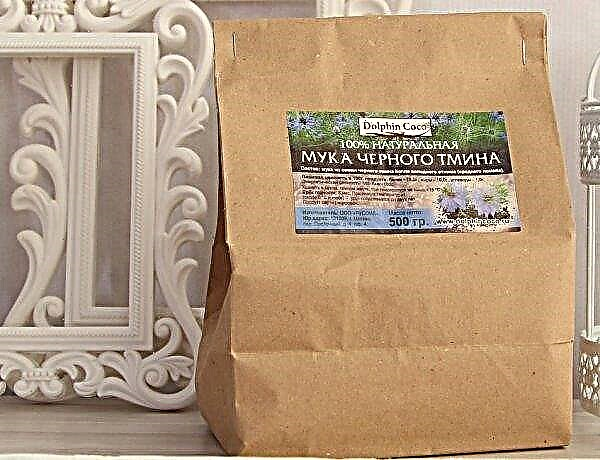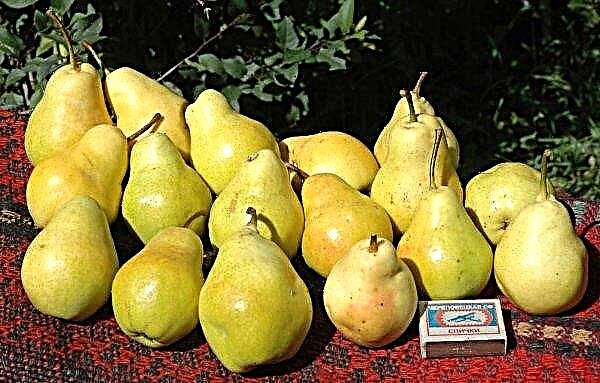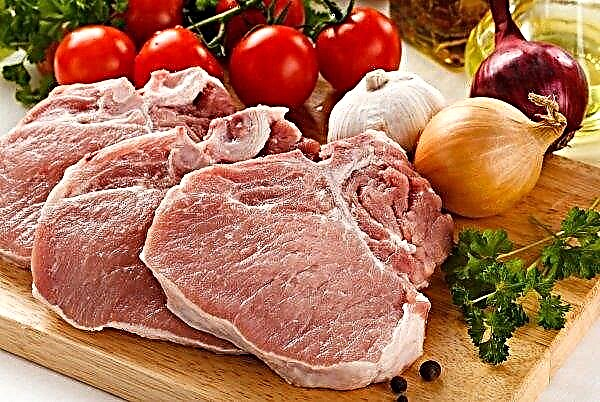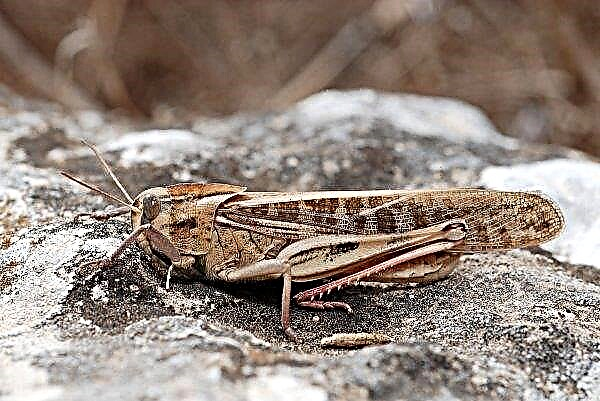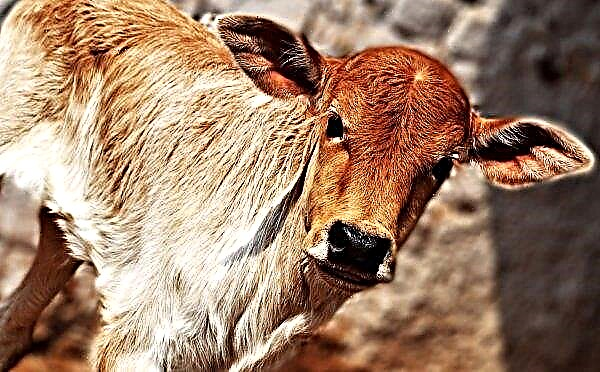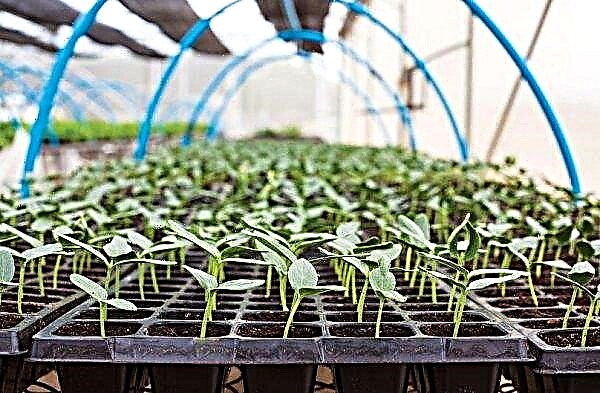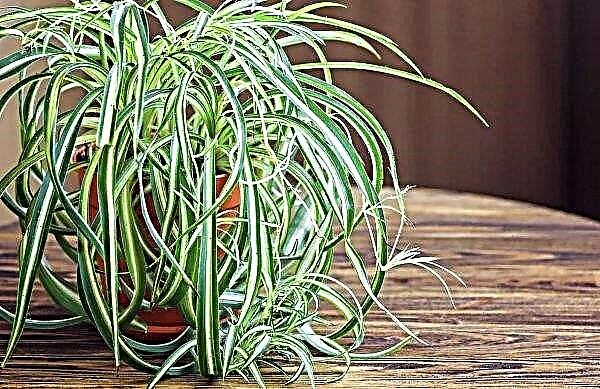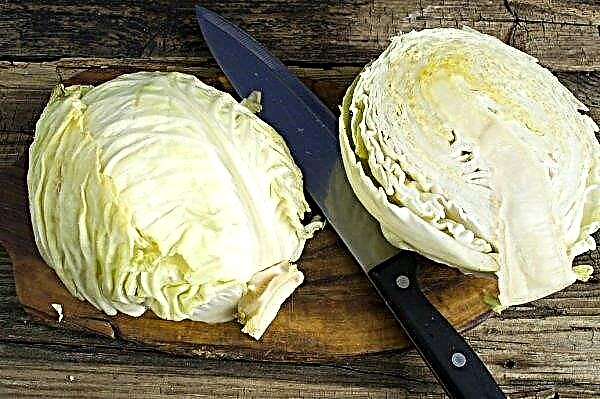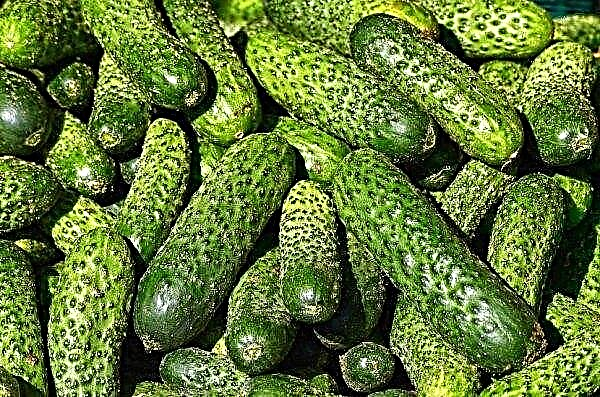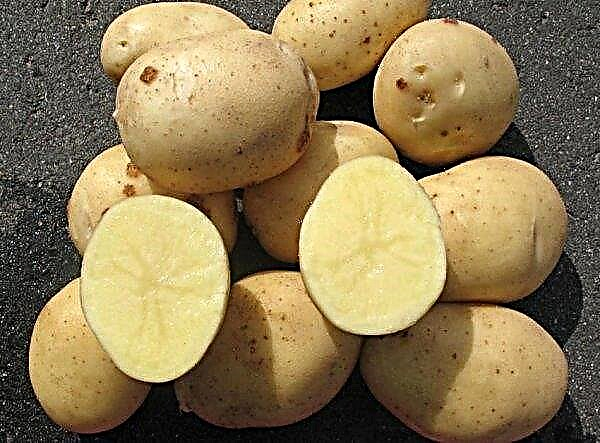How to harvest more from the same household plot is a long-known problem, it can be solved through planting a family onion. It differs not only in good yield, but also in shelf life. Let's get acquainted with its best varieties in more detail.
Description and characteristic
Family onion (small family, shrubbery) is a type of onion, which forms many small bulbs (primordia), including including shallots.
Important! Family onions can be stored without loss of commercial quality up to 10–12 months.
The plant can be described as follows:
- Inside the bulb is a shortened stem (bottom) with several buds in scales, from which leaves, arrows and new bulbs grow.
- The root system is poorly developed, without strong branches, without highlighting the main root, located 30–50 cm near the soil surface.
- From 1 bottom, several (up to 10) turnips are formed weighing 25–50 g each, oval, round or round-flat in shape, covered first with fleshy, then dry, dense, leathery scales called “shirt”. “Shirt” can be dyed in golden yellow, purple, reddish or yellow-brown. Ripening period is 50–70 days.
- The flesh is juicy, white, possibly with a light green, purple or yellow tint.
- Leaves (feathers) are green, thin, the tip is slightly pointed, grow from within each other in bunches, forming a false stem.
- This stem is called an arrow, it is empty inside, green in color, at its end in a thin shell are spherical inflorescences.
- When the shell bursts, white flowers appear on the pedicels, which have 6 petals, 6 stamens, and a pistil. Cross-pollination.
- After flowering, the fruit is formed in the form of a 3-sided capsule, inside of which there are up to 6 wrinkled black seeds with 3 faces.
- Frost resistance up to -7 ° C, loves moisture, tolerates heat well, grows most actively within +5 ... + 25 ° C.

The best varieties
The following family onion varieties are considered the best:
- Prince;
- Velikoustyugsky;
- Old Believers;
- White Queen;
- Grandee;
- Prometheus;
- Water lily.
The first 3 varieties are included in the State Register of selection achievements approved for use.
Prince
The main characteristics of the onion Knyazhich are presented in table. 1.
Table 1.Features of the family onion of the Knyazhich variety
| Indicators | Value |
| Bulb shape | Ellipse |
| The number of bulbs in the nest | 8 pcs |
| Bulb 1 | 24 g |
| Shirt color | Brown with a pink tint |
| Pulp | Juicy, shade of pink-violet, taste semi-sharp, pleasant |
 This onion can be stored for up to 10 months. With 1 m², you can collect about 900 g turnip crop. Belongs to mid-ripening type of ripening. Grown in personal household plots.
This onion can be stored for up to 10 months. With 1 m², you can collect about 900 g turnip crop. Belongs to mid-ripening type of ripening. Grown in personal household plots.Did you know? Marmalade is made from onion, and its husk can impart a reddish-brown color to the ham.
Velikoustyugsky
Features varieties Veliky Ustyug are presented in table. 2.
Table 2. The main characteristics of onions Velikoustyugsky
| Indicators | Value |
| Bulb shape | Rounded |
| The number of bulbs in the nest | 6 pcs |
| Bulb 1 | 22 g |
| Shirt color | Brick with a purple tint |
| Pulp | Juicy, dense, white, there is a purple hue, the taste is semi-sharp |
 The variety was discovered in 1989 in the city of Veliky Ustyug. Recommended for growing in households. During harvesting, 0.8 kg of onions are collected from 1 m². Refers to varieties of mid-ripening type of ripening.
The variety was discovered in 1989 in the city of Veliky Ustyug. Recommended for growing in households. During harvesting, 0.8 kg of onions are collected from 1 m². Refers to varieties of mid-ripening type of ripening.Old Believers
The main characteristics of the Old Believer cultivar are presented in table. 3.
Table 3. Description of the family onions
| Indicators | Value |
| Bulb shape | Wide ellipse |
| The number of bulbs in the nest | 8 pcs |
| Bulb 1 | 16 g |
| Shirt color | Dark red, shade brown |
| Pulp | Juicy, pleasant, spicy, white with a touch of purple |
 His homeland is the Vologda region, where it was used by Old Believers in recipes of traditional medicine. Belongs to mid-ripening varieties, grown in the conditions of household plots. With 1 m², about 1 kg of turnip can be collected with proper care.
His homeland is the Vologda region, where it was used by Old Believers in recipes of traditional medicine. Belongs to mid-ripening varieties, grown in the conditions of household plots. With 1 m², about 1 kg of turnip can be collected with proper care.White Queen
The White Queen variety is not included in the State Register, but it is no less popular (Table 4).
Table 4. The main characteristics of the family bow White Queen
| Indicators | Value |
| Bulb shape | Round elongated |
| The number of bulbs in the nest | 7-8 pcs. |
| Bulb 1 | 25-30 g |
| Shirt color | Creamy white |
| Pulp | Juicy, tender, slightly sweet-spicy, white |
 In conditions of long-term storage, it retains good commercial properties, suitable for salads and fresh consumption.
In conditions of long-term storage, it retains good commercial properties, suitable for salads and fresh consumption.Grandee
The main characteristics of the Grand variety are given in table. 5.
Table 5. Main characteristics of the Grand family onion
| Indicators | Value |
| Bulb shape | Flat |
| The number of bulbs in the nest | up to 11 pcs. |
| Bulb 1 | About 20 g |
| Shirt color | Yellow |
| Pulp | Juicy, with a slight yellow tint |
 Grand is grown to produce green feathers in spring and turnips at the end of ripening.
Grand is grown to produce green feathers in spring and turnips at the end of ripening.Prometheus
Among the owners of the gardens, the variety of the Prometheus family is also known (Table 6).
Table 6. Description of Prometheus onion variety
| Indicators | Value |
| Bulb shape | Right |
| The number of bulbs in the nest | 1-2 pcs. |
| Bulb 1 | 70-100 g |
| Shirt color | Dark red |
| Pulp | Juicy, the taste is soft, semi-sharp, the color is purple-red |
 Prometheus is characterized by high yields - from 1 m² to 4.7 kg turnip.
Prometheus is characterized by high yields - from 1 m² to 4.7 kg turnip.Did you know? Apples and pears contain less sugar than onions.
Water lily
A description of the variety of the Kuvshinka family is given in Table. 7.
Table 7. Features onions Water lily
| Indicators | Value |
| Bulb shape | Bottle, water lily |
| The number of bulbs in the nest | 4-5 pcs. |
| Bulb 1 | up to 70 g |
| Shirt color | Yellow brown |
| Pulp | Juicy, pale pink, slightly sweet spicy taste |

The water lily is removed after 80–90 days, this is an early ripe variety.
Harvest
A family crop is considered harvested if it has gone through the following stages:
- Digging up.
- Drying.
- Sorting.

How to dig out
For cleaning the family, it is better to use a pitchfork, with their help, a layer of soil under the plants is pried up and removed with them. Then the soil is shaken off, and the onion is laid out to dry. At the same time, you do not need to separate the nests.
The timing
They clean the family in late July or early August, avoiding over-ripening, otherwise turnips will absorb too much moisture and will not be able to be stored for long.
Important! Withered feathers will help determine the exact time for harvesting - when their number becomes more than 50%, you can dig out the onions.
At this time, the shirt of the bulbs from fleshy begins to turn into thinner and drier, the neck dries up. If the weather is rainy, it is better to postpone cleaning until the sun comes out. In the period of prolonged rains, the onions are dug up and immediately transferred to a place inaccessible to moisture for drying.
Drying process
Family drying takes place in 2 stages:
- First, turnip dug in the morning are left in the sun for the whole day, laid out on bags with 1 layer. For better drying, they can be turned over.
- At sunset, they are transferred to a place where sunlight does not fall, it is not so hot, there is access to fresh air and there is no excess moisture, they are poured into 1 layer and left for 2 weeks, in rainy summer it may take more time. An attic or canopy is suitable, where the temperature will be at the level of +25 ... + 30 ° С. To let the vegetable dry out evenly, it should be turned several times. Some housewives weave braids from feathers and then hang them to dry. You can also hang bundles connected from them.

The bulb is considered sufficiently dried if its neck is dry. After that, you need to cut the feathers and fold them for storage.
Selection and sorting
Only vegetables without damage, rotten places, not overripe and not harvested too early, well dried out, with a thin neck are suitable for storage. They also need to be sorted, separating planting material and food. The smallest specimens are chosen, their purpose is to become sevc to obtain green feathers or turnips. From them then a small number of large turnips grow. Large vegetables are eaten, several pieces can be left to the northeast, as they increase the amount of planting material.
Home storage specifics
After drying, the dried feathers are cut off from the bulbs and stored in bulk or left to store with braids. In general, the family has an increased ability to be stored for a long time.
Seasonal Features
Until the end of summer and sunny autumn withThe bag can be stored outdoors without access to the sun - on the balcony or porch. In winter, the desired temperature can usually be observed in the kitchen, insulated balcony, in the pantry. You need to check from time to time for the absence of rotten turnips.
In the rooms, the bow can be hidden under a sofa or wardrobe. A dry cellar or basement is also suitable. The spring sun and an increase in temperature stimulate the growth of turnips, in which case it is better to pick and plant them to get green feathers.Important! It is better to store the onion that was grown from the set, and not from the seeds.
Temperature mode
The temperature for storing family onions should be maintained at +18 ... + 22 ° C at low humidity. If you plan to store the vegetable in a basement or cellar, you need to make sure that the temperature there does not drop below 0 ° C, and the humidity does not exceed 85%.
The refrigerator is not suitable for storage due to high humidity. An onion that is stored in the temperature range +3 ... + 18 ° C can sprout with an arrow, and at temperatures above + 22 ° C it can dry out. Avoid proximity to heaters.
Ventilation system
The family needs air accessTherefore, the room must have natural or forced ventilation. Also, the storage container must provide an air flow, so several holes can be made in it.
Tara
In bulk, the family can be stored in low cardboard boxes, wooden boxes, wicker baskets, small bags of fabric or paper, nets, nylon tights or left tied in braids, hanging. Plastic containers must not be used. The height of the container should not exceed 30 cm. Between the layers you can pour a little husk or chalk.

Thus, growing family onions is a very profitable activity for owners of personal household plots. It quickly ripens, gives a large number of green feathers and turnips, is well stored. However, in order to eat a fresh vegetable even in spring, it must be properly cleaned and stored.

